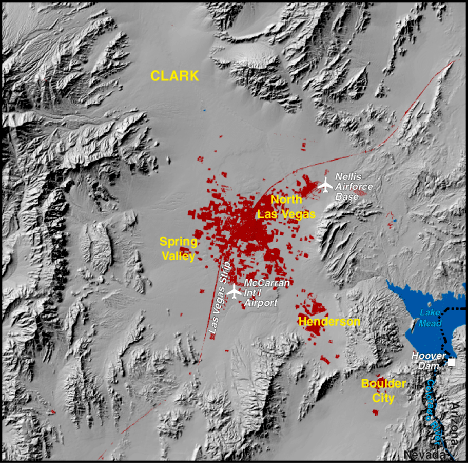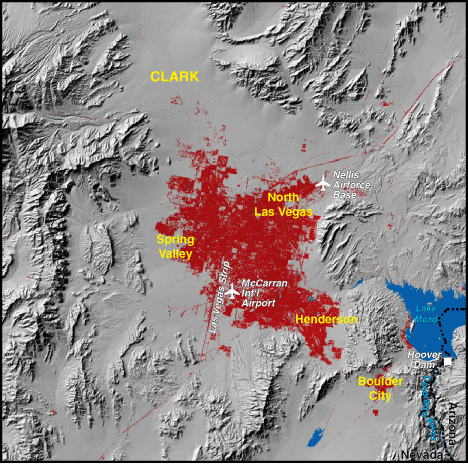Las Vegas, Nevada 1973


|
1970 Population - 273,288
Includes Clark County. NOTE: portions of the above listed county may not be visible on the map Red areas shown as developed land 37,400 acres (58 square miles) |
Known for its artesian wells, Nevada's Las Vegas Valley was first settled in the late 1800s when it became a stopping point between Salt Lake City and Los Angeles. The city of Las Vegas was founded in 1905 and developed into a regional center for railroad and mining activities. The construction of the Hoover Dam and Nellis Air Force Base by the Federal Government spurred growth between 1930 and 1945. Gambling, legalized in the 1930s, cheap electricity, and proximity to southern California's growing population fostered a glitzy resort economy. Gaming dominated the city's economic scene after 1960 as auto and air access improved. Corporate ownership of casinos later propelled the city into a world-class entertainment center. |
Las Vegas, Nevada 1992

|
1990 Population - 741,368
Includes Clark County. NOTE: portions of the above listed county may not be visible on the map Red areas shown as developed land 108,600 acres (170 square miles) |
The synergistic growth of other service industries has made Las Vegas one of the Nation's fastest growing metropolitan areas. This rapid expansion has stressed urban infrastructure. New power sources to augment locally produced hydropower were needed to meet growing energy demands. The proliferation of roads and other water-impervious surfaces aggravates flooding during thunderstorms. Water use has lowered the region's aquifer. Las Vegas was allotted water from Lake Mead in the 1960s, but the Colorado River may prove to be an unreliable source because its use was already heavily committed to southern California, Arizona, and Mexico. |